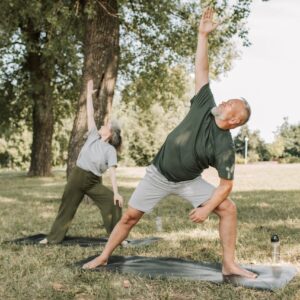Table of Contents
Discover the Hidden Benefits of Functional Strength Training

Functional Strength Training, often overlooked in traditional gym routines, offers a plethora of benefits beyond just building muscles. It focuses on enhancing your ability to perform daily activities efficiently while reducing the risk of injuries. Let’s delve into the hidden advantages of incorporating functional strength training into your fitness regimen.
7 Hidden Benefits of Functional Strength Training
1. Introduction to Functional Strength Training
Functional Strength Training revolves around exercises that mimic movements you perform in your daily life, such as bending, lifting, and reaching. Unlike isolated muscle training, which targets specific muscles, functional training aims to improve overall body strength and mobility.
2. Understanding Functional Strength
Defining Functional Strength
Functional strength refers to the ability of your muscles to work together efficiently in real-life situations. It’s not just about how much weight you can lift but how well you can move and stabilize your body in various movements and positions.
Importance in Daily Activities
Functional strength is crucial for performing everyday tasks, from carrying groceries to bending down to tie your shoes. By enhancing functional strength, you can move with greater ease and confidence in your daily life.
3. Benefits of Functional Strength Training
Improved Muscle Balance and Coordination
Functional strength exercises engage multiple muscle groups simultaneously, promoting better muscle balance and coordination. This translates to smoother and more controlled movements in daily activities.
Injury Prevention
By strengthening the muscles and joints involved in common movements, functional training reduces the risk of injuries, especially during activities that require bending, lifting, and twisting.
Enhanced Performance in Daily Tasks
Functional strength training improves your ability to perform tasks more efficiently, whether it’s carrying groceries, playing with your kids, or gardening. You’ll notice increased endurance and less fatigue during daily activities.
4. Functional Strength Training Exercises
Incorporating a variety of exercises into your routine is essential for targeting different muscle groups and improving overall functional strength. Here are some key exercises:
- Squats: Strengthen the lower body and improve mobility.
- Deadlifts: Target the back, glutes, and hamstrings while teaching proper lifting mechanics.
- Lunges: Enhance lower body strength and stability.
- Push-ups: Strengthen the chest, shoulders, and core.
- Pull-ups: Build upper body and back strength.
5. Tailoring Functional Strength Training to Your Needs
Assessing Personal Goals and Fitness Level
Before starting a functional strength training program, it’s essential to assess your goals and current fitness level. This will help you tailor the exercises to meet your specific needs and avoid injury.
Customizing Exercises and Intensity
Adjusting the exercises and intensity based on your abilities and progress ensures continued improvement and prevents plateaus. Gradually increase the challenge to keep seeing results.
6. Overcoming Common Misconceptions
Not Just for Athletes
Contrary to popular belief, functional strength training is not reserved for athletes. It benefits people of all ages and fitness levels, helping them lead more active and independent lives.
Suitable for All Ages and Fitness Levels
Whether you’re a beginner or a seasoned gym-goer, functional strength training can be adapted to suit your needs. Start with basic exercises and gradually progress as you build strength and confidence.
7. Integrating Functional Strength Training into Your Routine
Setting Realistic Goals
Establishing achievable goals, such as improving flexibility or increasing stamina, keeps you motivated and focused on your fitness journey.
Establishing a Consistent Schedule
Consistency is key to seeing results with functional strength training. Set aside dedicated time for workouts and stick to your schedule.
Incorporating Variety and Progression
Keep your workouts interesting by incorporating different exercises and variations. Monitor your progress and challenge yourself to push beyond your limits.
8. Conclusion
Functional strength training offers a holistic approach to fitness, improving not only muscle strength but also coordination, balance, and overall performance in daily activities. By incorporating functional exercises into your routine and customizing them to your needs, you can reap the hidden benefits of functional strength training and lead a healthier, more active lifestyle.
FAQs (Frequently Asked Questions)
- Is functional strength training suitable for beginners?
- Yes, functional strength training can be adapted to suit beginners by starting with simple exercises and gradually increasing intensity.
- Can functional strength training help with weight loss?
- While functional strength training primarily focuses on improving strength and mobility, it can contribute to weight loss when combined with a balanced diet and regular cardiovascular exercise.
- How often should I do functional strength training?
- Aim for at least two to three sessions per week, allowing for adequate rest and recovery between workouts.
- Are there any specific equipment requirements for functional strength training?
- While some exercises may require equipment like dumbbells or resistance bands, many can be performed using just your body weight.
- Can functional strength training help prevent injuries?
- Yes, functional strength training helps strengthen muscles and joints involved in common movements, reducing the risk of injuries during daily activities.






